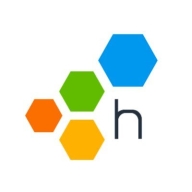

LogicMonitor and Honeycomb Enterprise are products in the observability and monitoring space. LogicMonitor generally has the upper hand for cost-conscious buyers due to its client support and pricing. Honeycomb Enterprise stands out for its advanced features, attracting those interested in cutting-edge technology despite the higher cost.
Features: LogicMonitor offers comprehensive cloud-based monitoring, analytics, and effective infrastructure monitoring. Honeycomb Enterprise specializes in distributed systems tracing, high data granularity, and faster debugging. LogicMonitor focuses on broad network visibility, while Honeycomb is known for detailed data analytics.
Ease of Deployment and Customer Service: LogicMonitor provides an intuitive cloud-based deployment with scalable onboarding and robust support resources. Honeycomb Enterprise offers an effective deployment model with personalized customer service and bespoke solutions for complex deployments.
Pricing and ROI: LogicMonitor is praised for its cost-effective setup and substantial return on investment through lower operating costs and comprehensive capabilities. Honeycomb Enterprise, at a higher price point, delivers significant ROI for those needing detailed data insight with pricing matching its advanced analytics features.
| Product | Market Share (%) |
|---|---|
| LogicMonitor | 0.8% |
| Honeycomb Enterprise | 1.3% |
| Other | 97.9% |


| Company Size | Count |
|---|---|
| Small Business | 11 |
| Midsize Enterprise | 10 |
| Large Enterprise | 9 |
Honeycomb Enterprise is designed to optimize performance visibility, offering a robust platform for distributed system observability. It provides insights for complex data and aids in faster issue resolution, making it a valuable tool for IT professionals.
This tool is tailored for real-time data tracking and improving system performance efficiency. Enterprises benefit from its capacity to handle large-scale data, ensuring seamless operations and continuity. Honeycomb Enterprise helps teams to tackle data challenges head-on by delivering comprehensive analytics that enhance infrastructure reliability and performance metrics.
What Features Make Honeycomb Enterprise Stand Out?In industries like finance, e-commerce, and technology, Honeycomb Enterprise implementations demonstrate its utility in managing complex data flows and optimizing system reliability. Businesses in these sectors leverage its capabilities to maintain high service standards and operational efficiency.
LogicMonitor offers flexible IT monitoring with customizable dashboards and robust alerting capabilities. It integrates seamlessly with third-party apps like ServiceNow and provides a single-pane view for diverse IT environments, aiding in proactive issue resolution and enhancing operational efficiency.
LogicMonitor stands out with its capability to monitor diverse infrastructures including Cisco Voice systems, data centers, and virtual environments. Supporting servers, storage, networking devices, and applications, it provides seamless integration with cloud services like AWS and Azure. Users leverage its scalability and flexibility, benefiting from dynamic thresholds, anomaly detection, and detailed visualization. All these features contribute to improved management of IT assets and streamlined operations. Users suggest improvements in mapping, reporting, and automation for remediation, desiring more customizations and an expansive application performance monitoring toolset.
What are LogicMonitor's key features?LogicMonitor is widely implemented across industries, providing monitoring for infrastructure in sectors like telecommunications, cloud computing, and managed services. Managed service providers particularly value its ability to track client environments, deliver proactive alerts, and generate comprehensive reports, while its integration with cloud platforms like AWS and Azure offers users centralized management and visibility into IT assets worldwide.
We monitor all Application Performance Monitoring (APM) and Observability reviews to prevent fraudulent reviews and keep review quality high. We do not post reviews by company employees or direct competitors. We validate each review for authenticity via cross-reference with LinkedIn, and personal follow-up with the reviewer when necessary.